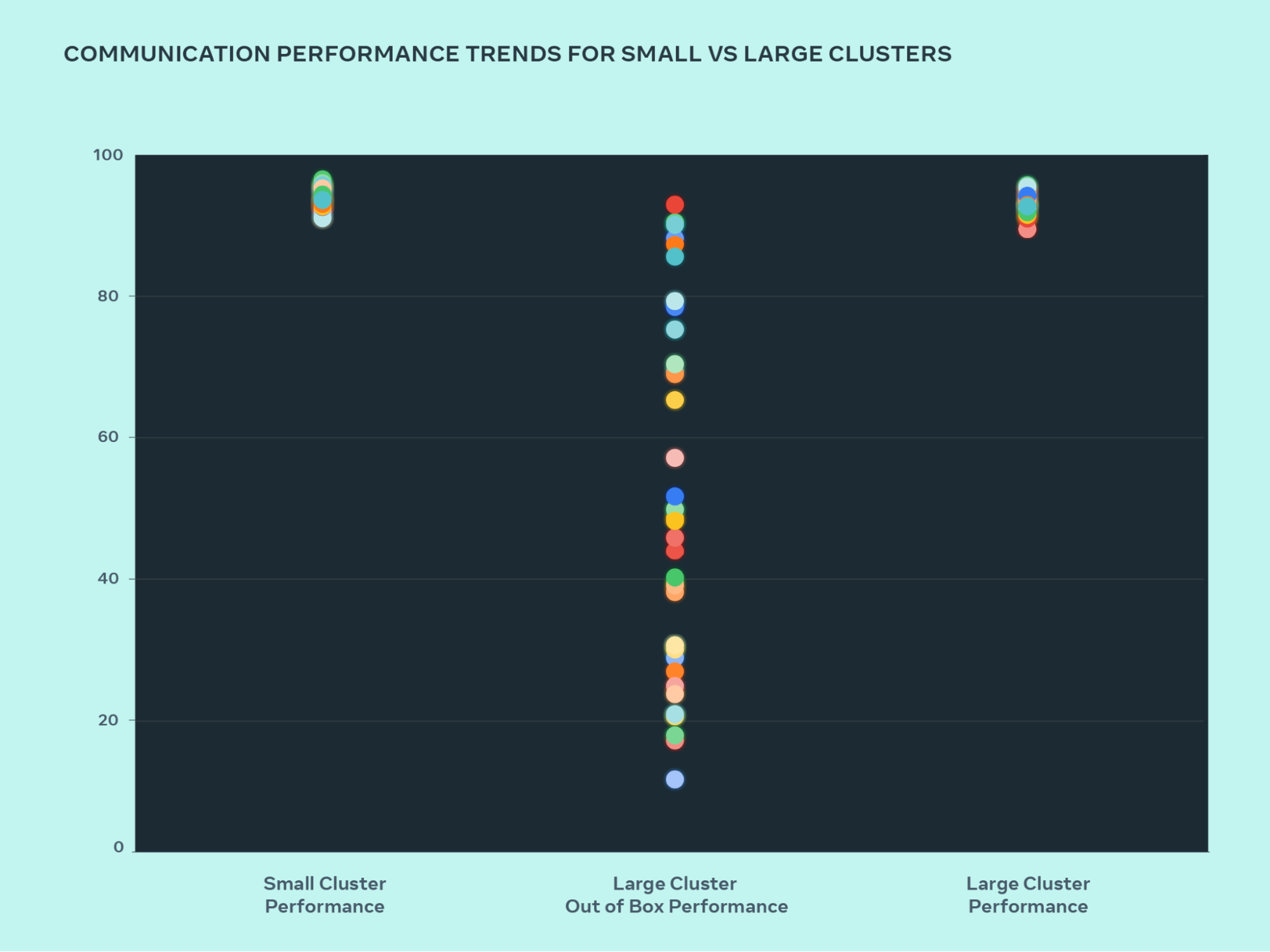-
This article details the creation of a low-cost drone using ESP32, a microcontroller unit with Wi-Fi connectivity, for less than Rs.1000. The project demonstrates clever use of the PCB as the drone frame, reduction of extra components like transmitters and receivers due to ESP32’s features, and the importance of calibration for proper operation. A detailed walkthrough of the construction process, including circuit diagrams and programming instructions, is provided for enthusiasts to replicate the project.
Main Points- Drone uses ESP 32 as flight controllerThe drone uses ESP 32 as its flight controller, which can be controlled from a mobile phone using Wi-Fi, showcasing an innovative approach to reducing costs and complexity in drone construction.
- PCB itself used as drone frameFor constructing the drone, no separate frame was used; instead, the PCB itself acted as the frame, signifying a clever utilization of components for multipurposes.
- Android app connects to drone via Wi-FiA particular Android app connects to the drone via Wi-Fi, demonstrating the integration of smartphone technology with remote-controlled devices.
- Importance of calibration for operationInitial calibration through the mobile application is crucial for correct drone operation, highlighting the importance of software adjustments in hardware performance.
122004763 -
This article discusses the cultural and ideological implications within Google, highlighted by reactions to their AI tool Gemini. Featuring insights from former employees and a detailed exploration into the company’s prioritization of diversity, equity, and inclusion over business and product efficacy, it sheds light on the systemic biases and the resultant cultural shift post-James Damore’s memo incident. The narrative unfolds through a critique of Google’s current work environment, ideological echo chamber, and its impact on product development and staff recruitment strategies.
Main Points- Controversy surrounds Google's AI tool, Gemini.Google's AI tool, Gemini, faced negative reactions due to its extreme ideological responses, highlighting systemic issues within Google's culture.
- DEI ideology deeply rooted in Google's culture.Former Google employees attributed these biases to a corporate culture deeply ingrained with DEI ideologies, positing a loss of business efficacy.
- Google's ideological shift post-Damore's firing.Incidents and internal pushes following the firing of James Damore signal a turning point towards an open ideological bias among the workforce.
122004763 -
Daytona, the Open Source Development Environment Manager, offers a streamlined process for setting up development environments with a single command. It supports various infrastructure and integrates multiple features like Git provider connections, IDE support, configurations, and security, making the setup process simpler and more efficient.
Main Points- Single Command SetupDaytona enables the activation of a fully configured development environment with a single command.
- Runs EverywhereDaytona supports development on local, remote, cloud-based, physical servers, or VMs across any architecture (x86 or ARM).
- Git Provider IntegrationDaytona supports integration with major Git providers like GitHub, GitLab, Bitbucket, and Gitea.
122004763 -
The article details the author’s journey from a nomadic lifestyle to setting up a home lab for technical experimentation and growth. It covers the importance of choosing a location, deciding on furniture to store equipment, and selecting the right hardware. Key insights include the purpose and benefits of having a home lab, considerations for selecting its location, equipment storage, and hardware selection.
Main Points- Purpose of a Home LabA home lab provides an environment to experiment, fail, and learn in the privacy of one's own home, encouraging technical growth and innovation.
- Importance of Location SelectionSelecting a location for a home lab involves considering several key factors including temperature, space, power, and accessibility to optimize the lab's effectiveness.
- Choosing the Right FurnitureWhen setting up a home lab, it's crucial to choose the right type of rack or cabinet to store equipment based on the individual needs of the hardware.
- Selection of HardwareBuilding a home lab involves understanding the technical requirements and selecting hardware that matches the lab's goals and user's skill level.
122004763 -
Alan Kay explores a range of topics in a talk at UCLA, moving from the impact of graphical user interfaces to the implications of AI and the relationship between technology practitioners and theorists. He stresses the transformative power of GUIs, the unpredictability of AI, and calls for a more integrated approach to technology development.
Main Points- GUIs' critical role in tech industryAlan Kay discusses the importance of GUIs for the success of the computing industry, reflecting on his experiences at Xerox Park.
- AI's potential misinformation risksKay warns about the potential dangers of unrestrained AI development and misuse, using an example of a chatbot going awry.
- Tech theory-practice splitKay points to a disconnect between technological practitioners and theorists, suggesting a stronger role for government and education in bridging this gap.
122004763 -
Mostr bridge uptime shows the status of the bridge between ActivityPub and Nostr. This open source project is powered by Upptime.
Main Points- Bridge between ActivityPub and NostrMostr Bridge is an uptime status page for the bridge between ActivityPub and Nostr.
- Page is open sourceThe page is open source and is powered by the project Upptime.
122004763 -
Open-source geocoding platform Nominatim enables users to find places by name or address and look up addresses for a given location using latitude and longitude. It supports free-form queries in any language and a structured query mode for automating geocoding of extensive address lists. It also allows finding the nearest address for any latitude and longitude or any OSM object given its ID.
Main Points- Find places by name or address (Geocoding)Nominatim can power the search box on your website, allowing your users to type free-form queries (“Cafe Paris, New York”) in any language. It also offers a structured query mode (“postcode=12345”, “city=London”, “type=cafe”) that helps you to automate geocoding of extensive address lists.
- Look up addresses for a location (Reverse geocoding)Given a latitude and longitude anywhere on the planet, Nominatim can find the nearest address. It can do the same for any OSM object given its ID.
122004763 -
Groundbreaking discovery might make existing computers twice as fast with no hardware upgrades (bgr.com)
Research on simultaneous and heterogeneous multithreading (SHMT) proposes a way to significantly improve computer performance and reduce energy usage without hardware upgrades. Initial tests showed up to 1.95 times faster processing and a 51% reduction in energy usage. However, the technology faces challenges, including the need for rigorous quality assurance tests to ensure compatibility across processor architectures. The breakthrough was presented at the 56th annual IEEE/ACM International Symposium on Microarchitecture.
Main Points- SHMT boosts PC performance without hardware upgradesSHMT takes advantage of multiple processors in devices to run tasks simultaneously, significantly boosting performance and energy efficiency without hardware changes.
- Challenges in SHMT integrationThe integration of SHMT into devices faces challenges such as the need for stringent quality assurance tests to avoid precision mismatches in processor architectures.
122004763 -
Look ma, I wrote a new JIT compiler for PostgreSQL – Pinaraf's website (www.pinaraf.info)
The article discusses the creation of pg-copyjit, a new JIT compiler for PostgreSQL developed by the author after being inspired by a recently proposed JIT compiler construction methodology. It explores the limitations of using LLVM for JIT compilation in PostgreSQL and introduces the advantages of the copy-and-patch methodology used by pg-copyjit. The author shares insights into the current performance of pg-copyjit, as well as future goals for optimization and expanding architecture support. Links to a research paper that inspired the project, the project’s GitHub repository, and a mentioned tool, PoWA, are also provided.
Main Points- Introduction of pg-copyjitThe author introduced pg-copyjit, a new JIT compiler for PostgreSQL, inspired by a new compiler construction methodology.
- Copy-and-patch methodologypg-copyjit is designed using a copy-and-patch methodology, allowing for faster query execution compared to traditional JIT compilers like LLVM.
- Performance and future plansThe current implementation of pg-copyjit shows significant performance improvements and plans for future optimization and support for multiple architectures are outlined.
- Limitations of LLVMThe limitations and challenges of using LLVM for JIT compilation in PostgreSQL were highlighted, including its expensive optimization process.
122004763 -
GitHub - pretzelai/pretzelai: Open-source, browser-local data exploration using DuckDB-Wasm and PRQL (github.com)
Pretzel is an open-source, offline browser-based tool for data exploration and visualization, leveraging WebAssembly-based DuckDB and PRQL for performance, with privacy-first design.
122004763 -
“Algorithms for Modern Hardware” is an upcoming high-performance computing book by Sergey Slotin, aimed at a wide range of readers from performance engineers to undergraduate students. The book, hosted entirely on GitHub, focuses on using modern hardware’s parallelism capabilities for practical algorithm speed improvements. It is divided into various parts, with themes ranging from performance engineering to distributed computing, and encourages community contributions and feedback.
Main Points- Performance EngineeringThe book covers the basics of computer architecture and optimization of single-threaded algorithms, detailing CPU optimization topics like caching, SIMD, and pipelining.
- Parallel AlgorithmsAddresses concurrency, cache coherence, synchronization primitives, OpenMP, and more, focusing on models of parallelism and concurrent algorithms.
- Distributed ComputingExplores distributed computing topics like networking, message passing, distributed databases, and cloud computing.
- Software & HardwareCovers software and hardware aspects like LLVM IR, compiler optimizations, FPGAs, ASICs, TPUs, and other AI accelerators.
122004763 -
Cerebras Systems Unveils World’s Fastest AI Chip with Whopping 4 Trillion Transistors - Cerebras (www.cerebras.net)
Cerebras Systems unveils the Wafer Scale Engine 3 (WSE-3), the world’s fastest AI chip, marking a significant advancement in AI hardware technology. With 4 trillion transistors, the WSE-3 is designed for the most demanding AI computations, offering superior efficiency and seamless integration into AI supercomputers like the Cerebras CS-3. This breakthrough underscores Cerebras’ ongoing commitment to innovation in AI technology and its strategic collaborations with key industry and academic partners.
Main Points- Introduction of WSE-3Cerebras Systems has introduced the Wafer Scale Engine 3 (WSE-3), a significant improvement over its predecessor, enabling twice the performance at the same power draw and cost.
- WSE-3's advanced technologyThe WSE-3, with its 4 trillion transistors and advanced technology, is built to prioritize AI workloads, especially for training large AI models.
- Benefits of CS-3 supercomputerCS-3 supercomputer, powered by WSE-3, simplifies workflows for AI model training, benefiting hugely from the improvements in processing efficiency.
- Strategic partnerships enhance AI researchStrategic partnerships with entities such as G42 and academic institutions underscore Cerebras' commitment to AI research and commercial AI application.
122004763 -
LaVague is an innovative project that automates menial, repetitive tasks on the internet by transforming natural language instructions into Selenium code, allowing users to focus on more meaningful endeavors. It leverages open-source models and advanced AI techniques to ensure user control and privacy. The project is in its early stages but has the potential to democratize transparent and aligned AI models.
Main Points- Efficient Browser AutomationLaVague offers natural language processing and Selenium integration for efficient browser automation.
- Open-Source and TransparentBuilt on open-source projects, ensuring transparency and alignment with user interests.
- Advanced AI TechniquesSupports advanced AI techniques for optimal action selection without code generation fine-tuning.
- Democratizing AIProject aims to democratize transparent and aligned AI models for Internet users.
122004763 -
Deadspin Journalism Sports Stadiums Management Disputes Nostalgia Sports business Entertainment Technology
“The Other Side of the Deadspin Saga” written by Trevor Kraus, explores personal attachments and the implications of transitioning from old to new in both the context of sports stadiums and personal items. It delves into the story of Deadspin, focusing on its management disputes, the ousting of its staff, and the wider implications for the journalism industry. The article provides insights into the challenges of nostalgia, the impact of editorial changes, and reflects on humanity’s preferences and the nature of profitability.
Main Points- Significance of Retro StadiumsThe author reflects on personal memories tied to Busch Stadium II, discussing the emotional and historical significance of such venues.
- Challenges of Maintaining Older StructuresThe author explores the difficulty of maintaining older belongings, drawing analogy between stadiums and personal items, highlighting the challenges of nostalgia vs practicality.
- Deadspin’s Management DisputesTransitioning to Deadspin’s story, the article discusses its editorial challenges, staff departure, and the consequences of changing ownership.
- Impact of Editorial Changes on Audience ReceptionFurther insight is provided into the implications of Deadspin's editorial changes for journalism, the nature of its content, and its audience's reception.
- Reflections on Public Preferences and ProfitThe article concludes with reflections on what Deadspin's saga and personal stories tell us about public preferences, profit, and the nature of attachment to past entities.
122004763 -
AI Meta GPU Clusters Open Source Infrastructure AI and Machine Learning Technology Artificial Intelligence
Meta announces the construction of two 24k GPU clusters as a significant investment in its AI future, emphasizing its commitment to open compute, open source, and a forward-looking infrastructure roadmap aimed at expanding its compute power significantly by 2024. The clusters support current and future AI models, including Llama 3, and are built using technologies such as Grand Teton, OpenRack, and PyTorch.
Main Points- Meta announces two 24k GPU clusters for AI workloads, including Llama 3 trainingMarking a major investment in Meta's AI future, we are announcing two 24k GPU clusters. We are sharing details on the hardware, network, storage, design, performance, and software that help us extract high throughput and reliability for various AI workloads. We use this cluster design for Llama 3 training.
- Commitment to open compute and open source with Grand Teton, OpenRack, and PyTorchWe are strongly committed to open compute and open source. We built these clusters on top of Grand Teton, OpenRack, and PyTorch and continue to push open innovation across the industry.
- Meta's roadmap includes expanding AI infrastructure to 350,000 NVIDIA H100 GPUs by 2024This announcement is one step in our ambitious infrastructure roadmap. By the end of 2024, we’re aiming to continue to grow our infrastructure build-out that will include 350,000 NVIDIA H100 GPUs as part of a portfolio that will feature compute power equivalent to nearly 600,000 H100s.
122004763 -
Thermodynamic Computing: Better than Quantum? | Guillaume Verdon and Trevor McCourt, Extropic - YouTube (youtube.com)Thermodynamic Computing Probabilistic Machine Learning Quantum Computing AI and Machine Learning Extropic Technology philosophy Artificial Intelligence Personal Growth social change
Extropic, a new venture mentioned in the First Principles podcast, is developing a pioneering computing paradigm that leverages noise and thermal fluctuations for computation. Unlike traditional quantum computing, which requires extreme cooling and faces scalability issues due to quantum decoherence, Extropic’s model aims to harness these thermal effects to improve computing efficiency and scalability. This approach could prove especially beneficial for AI and machine learning applications, offering a new direction for computational technology.
Main Points- Introduction of a new computing paradigm by Extropic.Extropic is exploring a new paradigm of computing that harnesses environmental noise, specifically thermal fluctuations, to perform computations. This approach aims to surpass the limitations of current quantum and deterministic computing by leveraging the inherent probabilistic nature of thermodynamic processes.
- Challenges in current computing technologies and Extropic's alternative approach.Current computing technologies, including quantum computing, face scalability challenges due to requirements for extreme cooling and complex error correction processes. Extropic's approach aims to embrace noise and thermal fluctuations, offering a more scalable and efficient computing model.
- Prospects of thermodynamic computing in AI and machine learning.Extropic's computing model is anticipated to provide substantial benefits for AI and machine learning, especially in applications that require probabilistic reasoning and low data regimes. This positions thermodynamic computing as a potential game-changer for future technological advancements in AI.
122004763 -
Johnny Depp Hollywood Legal Battle Financial Woes Public Image Personal Reflection Journalism business philosophy Entertainment Personal Growth Deadspin social change Technology
The article ‘The Trouble With Johnny Depp’ by Stephen Rodrick delves into Johnny Depp’s multifaceted life comprised of multimillion-dollar lawsuits, a controversial personal life, and the trials of maintaining a lifestyle beyond his means. It chronicles Depp’s legal battle against The Management Group, allegations of abuse from his ex-wife Amber Heard, and Depp’s introspection on his personal and financial downfall.
Main Points- Legal and Financial BattleDepp’s legal and personal troubles have culminated in a public and legal battle against his former management, bringing his once-private life under intense scrutiny.
- Personal Issues and PerceptionAllegations surrounding Depp's behavior towards his ex-wife Amber Heard have added to his woes, intertwining his personal difficulties with public perception.
- Self-reflectionReflecting on his career and choices, Depp offers insight into his mindset and the consequences of his lifestyle.
- Public vs. Private LifeA focus on Depp's journey, his rise to fame, and the complexity of his character, illustrating the disparity between the public figure and the private individual.
122004763 -
Techno-Optimism Technology Markets Abundance Growth philosophy business Personal Growth social change
The article presents a detailed manifesto of techno-optimism, advocating for the importance of technology and free markets in driving growth, progress, and abundance. It outlines how technology and markets together form a perpetual engine of material creation and growth. Furthermore, it argues for the potential of technology to create a world of abundant resources, elevate living standards, and ultimately expand human life across the universe.
Main Points- Productivity growth, driven by technologyTechnology drives productivity growth, which is the main driver of economic growth, wage growth, and the creation of new industries and jobs.
- Techno-capital machine of markets and innovationThe techno-capital machine, formed by combining markets and technology, leads to perpetual material creation, growth, and abundance.
- Creating abundance through intelligence and energyA feedback loop of intelligence and energy aimed at creating abundance is the way forward for humanity, making everything needed and wanted abundant.
122004763 -
development Erlang Elixir architecture design processes BEAM Concurrency Actor model system design maintainability Technology
Designing concurrent systems on the BEAM involves leveraging its concurrency model, rooted in the actor model, for process isolation and communication. A fundamental understanding that processes are not equated with code, and visualization strategies like considering processes as workers, are pivotal for system design. Key strategies include clear task allocation, flow-based structuring, and understanding process archetypes. Structuring code according to business domains further aligns technical solutions with business strategy, promoting maintainable and scalable system architecture.
Main Points- Overview of BEAM's Concurrency ModelThe BEAM's concurrency model, rooted in the actor model, focuses on lightweight, isolated processes communicating through message passing, fostering system resilience and maintainability.
- Clearing Misconceptions: Processes ≠ CodeMisinterpretation of processes as code can obscure the understanding of BEAM's concurrency model, but recognizing their separation illuminates design considerations for concurrency.
- Visualizing Processes for Better UnderstandingPersonifying processes as gnomes offers a tangible understanding of their independent operation, state management, and communication, enriching the conceptual grasp of concurrent system design on BEAM.
- Key Design Strategies for Concurrent SystemsTask allocation based on responsibility, structuring systems around data flow, and categorizing processes according to specific archetypes are critical strategies for designing concurrent systems on BEAM.
122004763 -
Chamath Palihapitiya, Founder and CEO Social Capital, on Money as an Instrument of Change - YouTube (www.youtube.com)Generosity Entrepreneurship Technology Social Responsibility Patience business philosophy social change capitalism Markets Personal Growth
Chamath Palihapitiya, founder and CEO of Social Capital, shares profound insights on money, social change, and the importance of patience in building meaningful ventures. Through his personal journey and business philosophy, he emphasizes the transformative role of capital allocation in driving societal progress. Palihapitiya critiques the negative effects of social media on society, advocating for a more contemplative, long-term approach to problem-solving and the accumulation of capital to effect positive change. He opens up about the risk of power’s corrupting influence and the ongoing challenge of maintaining integrity.
Main Points- Palihapitiya's view on money as an empowerment toolChamath Palihapitiya discusses the critical role of money in his life, viewing it not materially but as a tool to empower and achieve desired goals, a perspective shaped by his challenging upbringing.
- Journey from hardship to successHe shares insights on his journey from a dysfunctional family to becoming a successful businessman, attributing his success to patience, long-term thinking, and the ability to adapt and change.
- Critique of social media's impact on societyPalihapitiya criticizes the short-term dopamine-driven feedback loops created by social media platforms, expressing concern over their detrimental impact on societal behaviors and relationships.
- Importance of capital for social changeHe underscores the significance of amassing capital to effect social change, advocating for a more patient, systematic approach to solving complex problems and building sustainable businesses.
- Challenges of power and integrity in societal changeChamath Palihapitiya reflects on the challenges of maintaining integrity and avoiding the corrupting influence of power in the pursuit of influencing societal changes through capital.
122004763 -
machine learning reinforcement learning simulation neural networks AI and Machine Learning Artificial Intelligence Technology
This article discusses the concept of world models - generative neural network models that allow agents to simulate and learn within their own dream environments. Agents can be trained to perform tasks within these simulations and then apply the learned policies in real-world scenarios. The study explores this approach within the context of reinforcement learning environments, highlighting its potential for efficient learning and policy transfer. The integration of iterative training procedures and evolution strategies further supports the scalability and applicability of this method to complex tasks.
Main Points- World Models as Training EnvironmentsWorld models enable agents to train in simulated environments or 'dreams' which are generated from learned representations of real-world data.
- Applicability of Dream-learned PoliciesBy training within these dream environments, agents can develop policies that are applicable to real-world tasks without direct exposure, showcasing a novel form of learning efficiency.
- Evolution Strategies for Policy OptimizationIncorporation of Evolution Strategies alongside world models presents a scalable method for optimizing agent behaviors within complex, simulated environments.
122004763 -
Alan Kay’s talk at UCLA highlights his views on technology, society, and future research. He discusses the importance of ARPA in technological breakthroughs, the immense value that Xerox PARC’s innovations have brought to the global economy, and the challenges in today’s environment for achieving groundbreaking research. Kay emphasizes the significance of education for fostering systems thinkers and innovators and calls for a blend of diverse skills in computing for future success.
Main Points- Challenges in replicating PARC's success today.Current research environments lack the same level of support Xerox PARC had, making groundbreaking work more challenging.
- Impact of PARC's innovations on the global economy.Xerox PARC's innovations have contributed significantly to the global economy, highlighting the value of technological advances.
- Importance of education in fostering innovation.Education is crucial in preparing future generations to think systematically and innovate across disciplines.
- Role of ARPA in technological breakthroughs.The significance of ARPA's work in shaping the internet and modern computing cannot be overstated.
- Need for diversified skills in computing.To push technological boundaries, it's essential to blend diverse skill sets like design and engineering.
122004763 -
The article offers a comprehensive guide to setting up a home lab, including insights on the importance of failure in personal development, choosing the right location, and selecting appropriate hardware. Hayden James shares his journey and personal experiences in building out his home lab, covering routers, switches, servers, and more, to inspire others interested in creating their own home labs.
Main Points- Definition and Purpose of a Home LabDefines what a home lab is and its purpose for personal development and experimentation.
- Importance of Location SelectionDiscusses the importance of choosing the optimal location for a home lab based on several key factors.
- Recommended Hardware for a Home LabLists recommended hardware for setting up a home lab, including routers, switches, and servers, with updates on their availability and functionality.
122004763 -
The Berkeley Software Distribution (BSD) history outlines the evolution of UNIX from its first public presentation in 1973, through legal and technical challenges faced by AT&T and early adopters, to its spread across academia and development into a widely influential open-source operating system. This pathway highlights key moments such as the first UNIX port outside of PDP-11 to IBM 360, the creation and distribution of BSD leading to significant advancements in operating systems, and the eventual wide-reaching impact of BSD on modern computing, including the development of macOS, NetBSD, OpenBSD, FreeBSD, and others.
Main Points- Public presentation of UNIX.Initial public presentation of UNIX in 1973 received polite but subdued reaction.
- AT&T's legal issues with distributing UNIX.AT&T faced potential legal issues in distributing UNIX due to its monopoly position.
- UNIX port to IBM 360.The successful port to IBM 360 marked UNIX's adaptability to varied hardware.
- BSD's impact on modern operating systems.Berkeley Software Distribution (BSD)'s significant contributions to operating system development, leading to the creation of many modern OSes.
122004763 -
private jet Iman Gadzhi The Jet Business aviation luxury Lifestyle business Entrepreneurship Technology
The article discusses Iman Gadzhi’s intention to spend up to $30 million on a private jet, exploring the purchasing process through The Jet Business, a unique jet sales company. It highlights The Jet Business’s distinctive showroom and approach to building long-term customer relationships, the changing dynamics of the global airplane market, and the importance of the showroom’s strategic location in London for attracting potential buyers.
Main Points- Iman Gadzhi's Intent to Buy a $30 Million Jet and His CriteriaIman Gadzhi is interested in purchasing a private jet with a budget of $30 million. The Jet Business, which specializes in high-end jets, fits his needs by providing a unique buying experience and a wide selection of jets that meet his criteria.
122004763
We can't find the internet
Attempting to reconnect
Something went wrong!
Hang in there while we get back on track

Tags
see all- Technology
- AI
- Open Source
- programming
- AI and Machine Learning
- Elixir
- Artificial Intelligence
- philosophy
- Personal Growth
- Rust
- business
- social change
- software development
- Python
- machine learning
- innovation
- Linux
- DIY
- collaboration
- Nominatim
- architecture
- Entertainment
- performance improvement
- performance
- education
- Android
- PostgreSQL
- Docker
- Deadspin
- ActivityPub
- Slint
- Developer Experience
- NixOS
- SQL
- Drone
- neural networks
- simulation
- Erlang
- Journalism
- Entrepreneurship
- LLM
- scalability
- Concurrency
- fault tolerance
- immutable URLs
- Nix
- productivity
- WebAssembly
- Database
- Generative AI
- Security
- Home Lab
- deployment
- ESP32
- Language Models
- automation
- Data Visualization
- Markets
- Networking
- Ecto
- computing
- BEAM
- metal recovery
- Quantum Computing
- Robotics
- Web 2.0
- financial wellbeing
- harsh environments
- Miniaturization
- eclipse safety
- Public Health
- Web PKI
- Chess
- Transparency
- memory allocation
- safety
- brinespace
- Diversity
- brewer's yeast
- hardware review
- Cryptanalysis
- compiler backend
- anterior neostriatum
- compression
- Psychology
- Vulnerabilities
- computational complexity
- luxury
- Windows
- Natural Language Processing
- cloud native
- Legal Battle
- maintainability
- Lifestyle
- US Jobs Market
- Mike Benz
- dinosaurs
- Investment Strategy
- Xerox Park
- design
- Bletchley Park
- gaming
- Consumer Advice
- AI Democratization
- Economy
- Behavioral Biology
- Particles
- Parallelism
- brain abnormalities
- Query Optimization
- Church Growth
- Mathematics
- WWII
- problem-solving
- Cerebras Systems
- structured inference
- API
- LaVague
- mechanical design
- UNIX
- Certificate Transparency
- Ericsson
- Iman Gadzhi
- Thermodynamic Computing
- Nvidia
- electrolyte solutions
- setup simplicity
- Synchronization Primitives
- Wasmtime
- work-life balance
- Big Tech
- LLMs
- Twitch
- Tucker Carlson
- Garbage Collection
- machining
- Personal Reflection
- free speech
- Generosity
- Sports Stadiums
- Ash 3.0
- WebTransport
- celestial event
- ChatGPT
- processor-controlled
- computer graphics
- Actor model
- oral rehydration solution
- Missouri v. Biden
- password security
- Academic Freedom
- developer tools
- capitalism
- compilation
- total solar eclipse
- Performance Engineering
- Effective Methods
- 3D printing
- Wi-Fi Control
- hardware-controlled
- S&P 500
- Telemetry
- Encoding
- Theology
- First Amendment
- ISO GQL
- Web Monitoring
- Data Compression
- development environment management
- intelligence agencies
- Satire
- Divine Healing
- NSA
- WSE-3
- corporate media
- YouTube
- Project Management
- Sunlight
- basal ganglia
- constraints
- Online Learning
- Mobile App Development
- Medical Technology
- teamwork
- Server Management
- High-Performance Computing
- aviation
- Hugo Barra
- processes
- GUI Toolkit
- Foreign Data Wrapper
- Debugging
- spiritual experience
- indie game development
- kernel exploitation
- note-taking
- Cost-saving
- biosorption
- shuffle
- Probabilistic Machine Learning
- Economic Trends
- Media Criticism
- CMOS integrated circuits
- GPU security
- Technology Criticism
- health benefits
- Upptime
- Flutter
- Jensen Huang
- copyright
- Logging
- Memory Tagging Extension
- streaming service
- undecidability
- Enigma
- Speculative Execution
- remote work
- Coding
- Social Responsibility
- Corporate Profits
- Adm. Hyman G. Rickover
- Cipher
- Stable Video 3D
- AI Chip
- Nostr
- boot sequence
- APIs
- Pixel 8
- management
- register allocation
- Jordan Peterson
- Non-Transformer Models
- NewsGuard
- Computer Systems Research
- Content Creation
- system administration
- navy
- Software Support
- nuclear submarine
- Veeps
- Elisp
- StashPad Docs
- Truth
- Pentecostal Movement
- Categorical Thinking
- Deglobalization
- live sports
- Annual Letter
- cholera
- GitHub Actions
- Vaccine Mandates
- Flox
- devops
- Containerization
- E-graphs
- NP class
- Data Contamination
- Function Calling
- table formatting
- treatment
- Internet Iron Curtain
- Extropic
- AR
- Ovid
- development
- Federated System
- National Science Foundation
- Operating Systems
- functional programming
- Cypher
- JIT Compiler
- community discourse
- virtual environment
- Nostalgia
- RISC
- time management
- WebRTC
- Microsoft Research
- CIA
- AMD Graphics Cards
- Murthy v. Missouri
- superoptimization
- Geocoding
- GUI
- package manager
- Chips
- Evangelism
- low-cost project
- Wikipedia
- mammals
- communication
- Standards
- library
- OpenAI
- Selenium
- weight loss
- workplace culture
- Cranelift
- diagnosis
- pattern-matching
- troubleshooting
- Handheld Devices
- Circuit Digest
- Statistical Analysis
- AppSignal
- Parallel Computing
- titanosaurs
- spy agencies
- Meta
- The New York Times
- Torsion Springs
- Deep Packet Inspection
- leadership
- Growth
- OpenStreetMap
- Zed
- Ollama
- Let's Encrypt
- Richard Stallman
- GPU Clusters
- life advice
- Garnet
- software failure
- COVID-19
- LiveView
- Turing Machines
- federated models
- operating system
- GPUI
- Long-Polling
- text renderer
- software
- flash memory
- message passing
- AI-driven development
- Genetics
- community building
- schema migration
- cache-store
- Live-Preview
- evaluation
- BSD
- real-time communication
- software engineering
- video games
- hoaxes
- Church-Turing Thesis
- Algorithm
- Human Behavior
- workflows
- conditional
- Log-Normal Distribution
- CRDT
- AI Supercomputers
- Tablex
- FBI
- Garage Door Repair
- TypeScript
- Technology Trends
- Software Release
- pcase
- e-waste management
- N-channel diamond MOSFET
- Hollywood
- Lockdowns
- reptiles
- coding environment
- asynchronous communication
- Emacs
- Uppttime
- biometrics
- Financial Woes
- Blackwell
- 3D generation
- Learning Curve
- computational models
- Structured Logging
- Berkeley
- Server-Sent Events
- Race Conditions
- The Jet Business
- misinformation
- Stashpad
- Customization
- bitfield
- software critique
- Stability AI
- reinforcement learning
- VIBES
- immersive technology
- UI development
- Fingerprinting
- In-Context Learning
- scaling
- SIMA
- Regression Analysis
- Techno-Optimism
- Algorithm Design
- AT&T
- AI Acceleration
- Domain Modeling
- RP2040
- incident commander
- Personal Pronouns
- Ultrasound
- OpenVPN
- diamond electronics
- Hardware Selection
- theoretical computer science
- Notifications
- dehydration
- execution plan
- CVE-2023-6241
- animal behavior
- Google Docs alternative
- macOS
- Patience
- developmental language disorder
- Culture
- Johnny Depp
- hash table
- Sports
- browser automation
- Vision Pro
- nuclear navy
- authentication
- Database Innovation
- knowledge sharing
- Technology History
- virtual reality
- Xerox PARC
- UI/UX Design
- Transition
- WebSockets
- VS Code
- Computer Science
- cryptography
- .NET
- Daytona
- Android security
- Optimization
- PRQL
- Servers
- media bias
- Neovim
- VPN
- code-generation
- Design Systems
- censorship
- user code execution
- Capabilities
- Queries
- game design
- randomness
- x86
- Wafer Scale Engine 3
- lawsuit
- Source Code
- AI agent
- private jet
- PCB design
- Redis
- graph theory
- system design
- Abundance
- Cybersecurity
- sustainable technology
- Tools Format
- Phoenix
- system efficiency
- MEMS
- Decision Table
- Alan Kay
- Public Image
- Management Disputes
- computer vision
- Graph Database
- cond*
- Infrastructure
- Encyclopedia
- VR
- ARPA
- web development
- Apple
- Hermes-2-Pro-Mistral-7B
- DuckDB
- Unison
- disinformation
- sauropod
- Computability
- Feature Learning











